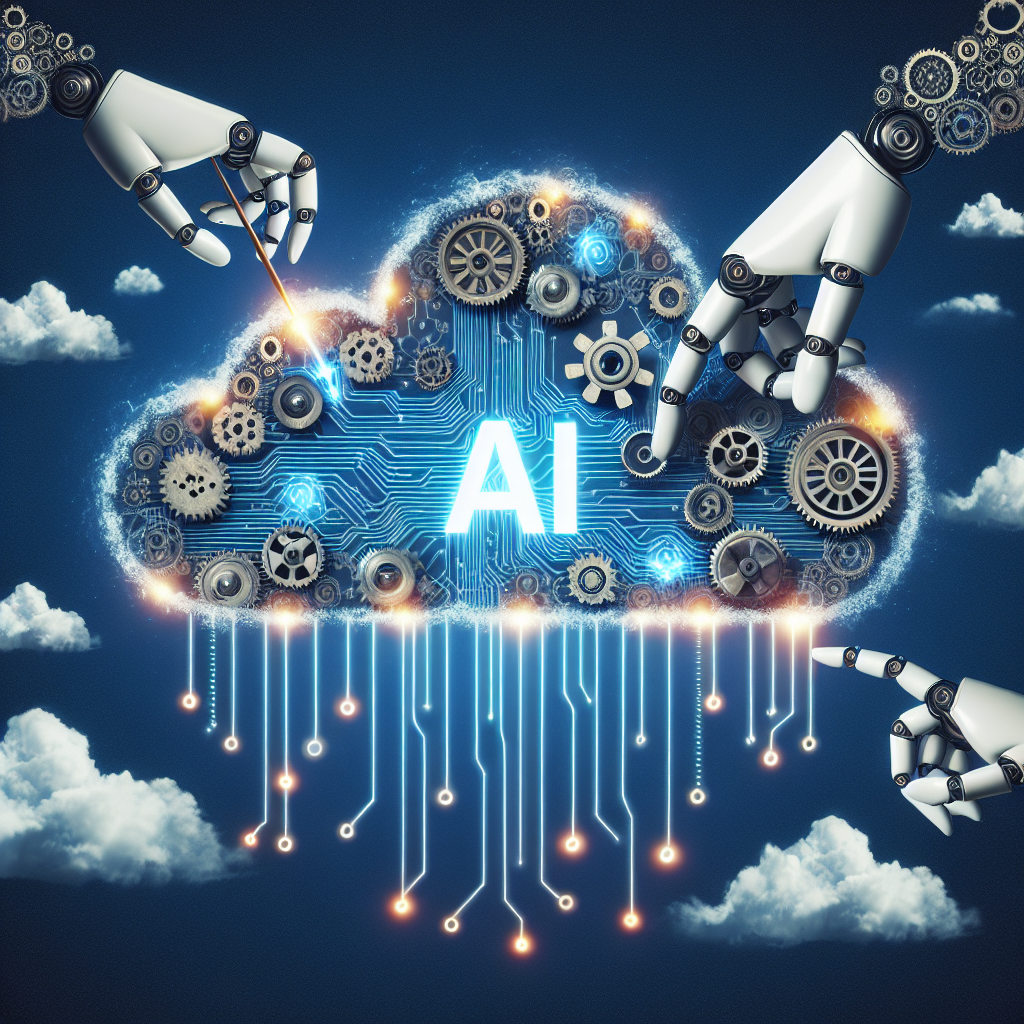The Future of AI in Cloud Automation
Artificial Intelligence (AI) has been a hot topic in the tech industry for several years now, and its impact on cloud automation is becoming increasingly apparent. As businesses look to streamline their operations and improve efficiency, AI-powered cloud automation is poised to play a critical role in achieving these goals.
Cloud automation refers to the process of automatically provisioning and managing cloud resources, such as virtual machines, storage, and networking, without human intervention. This allows organizations to scale their infrastructure rapidly, reduce costs, and improve the overall efficiency of their operations.
AI is revolutionizing cloud automation by enabling intelligent decision-making and predictive analysis that can optimize resource allocation, improve security, and streamline workflows. With the help of AI, organizations can automate complex tasks, such as resource provisioning, monitoring, and maintenance, with greater speed and accuracy than ever before.
One of the key benefits of AI in cloud automation is its ability to analyze vast amounts of data in real-time and make informed decisions based on that data. For example, AI-powered algorithms can monitor network traffic patterns and identify potential security threats before they escalate into a full-blown attack. This proactive approach to security can help organizations detect and mitigate threats more quickly, reducing the risk of data breaches and other cyber incidents.
Another area where AI is making a significant impact on cloud automation is in resource optimization. AI algorithms can analyze usage patterns and performance metrics to identify opportunities for cost savings and efficiency improvements. For example, AI can automatically scale resources up or down based on demand, ensuring that organizations only pay for the resources they actually need.
In addition to optimizing resource allocation, AI can also improve the overall performance of cloud-based applications and services. By analyzing user behavior and feedback, AI algorithms can identify areas for improvement and automatically make adjustments to enhance the user experience. This can lead to increased customer satisfaction, higher retention rates, and ultimately, improved business outcomes.
As AI continues to evolve and mature, its potential to transform cloud automation will only grow. In the coming years, we can expect to see even more sophisticated AI algorithms that can automate a wider range of tasks and make even more accurate predictions. This will enable organizations to achieve new levels of efficiency and agility, allowing them to stay ahead of the competition in an increasingly fast-paced and complex business environment.
FAQs
Q: How is AI different from traditional automation?
A: Traditional automation relies on pre-defined rules and scripts to perform tasks, while AI uses machine learning algorithms to analyze data and make intelligent decisions. This allows AI to adapt to changing conditions and optimize processes in ways that traditional automation cannot.
Q: What are some common use cases for AI in cloud automation?
A: Some common use cases for AI in cloud automation include security threat detection, resource optimization, performance tuning, and user experience enhancement. AI can also be used to automate routine tasks, such as provisioning and monitoring, freeing up human resources for more strategic activities.
Q: How can organizations get started with AI in cloud automation?
A: Organizations looking to leverage AI in cloud automation should start by identifying their specific use cases and goals. They should then evaluate AI solutions that are tailored to their needs and integrate them into their existing cloud infrastructure. It’s also important to provide training and support for employees to ensure successful adoption of AI technologies.
Q: What are some potential challenges and risks associated with AI in cloud automation?
A: Some potential challenges and risks of AI in cloud automation include data privacy concerns, algorithm bias, and the need for skilled personnel to manage and maintain AI systems. Organizations must also be mindful of potential security vulnerabilities and ensure that their AI systems comply with regulatory requirements.
In conclusion, the future of AI in cloud automation looks bright, with the potential to revolutionize the way organizations manage and optimize their cloud infrastructure. By harnessing the power of AI to automate routine tasks, optimize resources, and enhance performance, businesses can achieve greater efficiency, agility, and competitiveness in today’s rapidly evolving digital landscape. As AI technologies continue to advance, we can expect to see even more innovative solutions that will reshape the way we think about cloud automation and its role in driving business success.

